
NGC 4309 is a lenticular galaxy located about 55 million light-years away in the constellation Virgo. The galaxy was discovered by astronomer Christian Peters in 1881 and is a member of the Virgo Cluster.

NGC 4394 is a SBb barred spiral galaxy in the constellation Coma Berenices and is situated about 39.5 million light-years from Earth. It was discovered on 14 March 1784 by the German–British astronomer William Herschel. It is a presumed companion to the lenticular galaxy M85 / NGC 4382, which lies 8 arc minutes away. It is also a member of the Virgo Cluster.
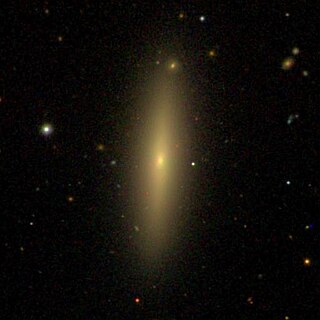
NGC 4623 is an edge-on lenticular or elliptical galaxy located about 54 million light-years away in the constellation of Virgo. NGC 4623 is classified as an E7, a rare type of "late" elliptical that represents the first stage of transition into a lenticular galaxy. NGC 4623 was discovered by astronomer William Herschel on April 13, 1784. NGC 4623 is a member of the Virgo Cluster.

NGC 4612 is a barred lenticular galaxy located about 57 million light-years away in the constellation of Virgo. NGC 4612 was discovered by astronomer William Herschel on January 23, 1784. The galaxy is a member of the Virgo Cluster.

NGC 4754 is a barred lenticular galaxy located about 53 million light-years away in the constellation of Virgo. NGC 4754 was discovered by astronomer William Herschel on March 15, 1784. It forms a non-interacting pair with the edge-on lenticular galaxy NGC 4762. NGC 4754 is a member of the Virgo Cluster.
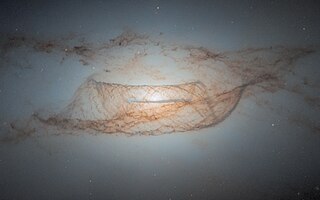
NGC 4753 is a lenticular galaxy located about 60 million light-years away in the constellation of Virgo. NGC 4753 was discovered by astronomer William Herschel on February 22, 1784. It is notable for having distinct dust lanes that surround its nucleus. It is a member of the NGC 4753 Group of galaxies, which is a member of the Virgo II Groups, a series of galaxies and galaxy clusters strung out from the southern edge of the Virgo Supercluster.

NGC 4492 is a spiral galaxy located about 90 million light-years away in the constellation Virgo. NGC 4492 was discovered by astronomer William Herschel on December 28, 1785. It was rediscovered by astronomer Arnold Schwassmann on January 23, 1900, and was listed as IC 3438. NGC 4492 lies in the direction of the Virgo Cluster. However, it is not considered to be a member of that cluster.
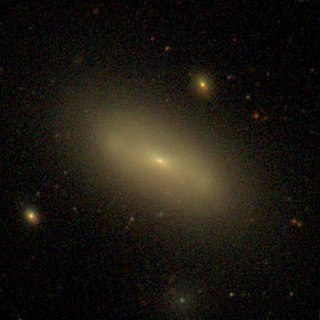
NGC 4497 is a lenticular galaxy located about 60 million light-years away in the constellation Virgo. NGC 4497 was discovered by astronomer William Herschel on March 15, 1784. It was rediscovered by astronomer Arnold Schwassmann on November 8, 1900 and was listed as IC 3452. NGC 4497 is a member of the Virgo Cluster.

NGC 4503 is a barred lenticular galaxy located around 41 to 74 million light-years away in the constellation Virgo. NGC 4503 was discovered by astronomer William Herschel on March 15, 1784. NGC 4503 is a member of the Virgo Cluster.

NGC 4528 is a barred lenticular galaxy located about 50 million light-years away in the constellation Virgo. It was discovered by astronomer William Herschel on March 15, 1784. The galaxy is a member of the Virgo Cluster.
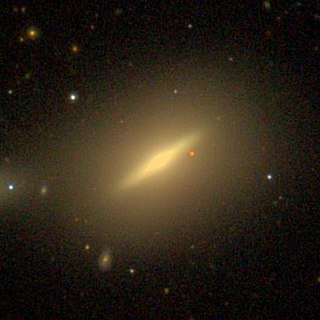
NGC 4638 is an edge-on lenticular galaxy located about 50 million light-years away in the constellation Virgo. NGC 4638 was discovered by astronomer William Herschel on March 15, 1784. The galaxy is a member of the Virgo Cluster.

NGC 4659 is a lenticular galaxy located about 54 million light-years away in the constellation Coma Berenices. NGC 4659 was discovered by astronomer William Herschel on April 12, 1784 and is a member of the Virgo Cluster.
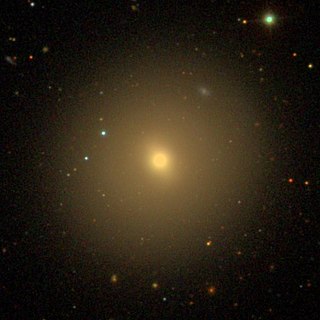
NGC 4267 is a barred lenticular galaxy located about 55 million light-years away in the constellation Virgo. It was discovered by astronomer William Herschel on April 17, 1784 and is a member of the Virgo Cluster.
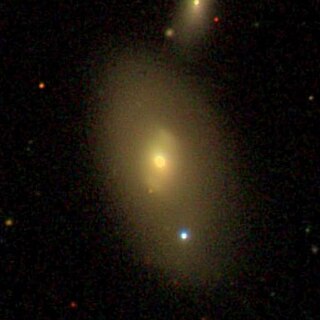
NGC 4296 is a barred lenticular galaxy located about 200 million light-years away in the constellation Virgo. It was discovered by astronomer William Herschel on April 13, 1784. It forms a pair with NGC 4297, and both galaxies are listed as CGCG 042-041, and KPG 331.

NGC 4297 is a lenticular galaxy located about 200 million light-years away in the constellation Virgo. It was discovered by astronomer William Herschel on April 13, 1784. It forms an interacting pair with NGC 4296.
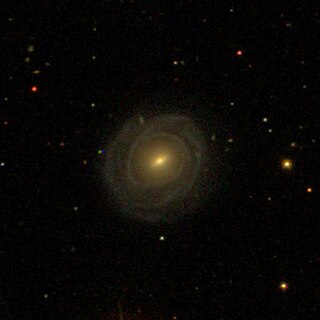
NGC 4326 is a barred spiral galaxy with a ring located about 330 million light-years away in the constellation Virgo. It was discovered by astronomer William Herschel on April 13, 1784, who described it as "vF, S, R, bM, 1st of 3". It is a large galaxy, with a diameter of around 200,000 ly (61 kpc) making it nearly twice the size of the Milky Way. NGC 4326 is also classified as a LINER galaxy. Despite being listed in the Virgo Cluster catalog as VCC 623, it is not a member of the Virgo Cluster but instead a background galaxy.
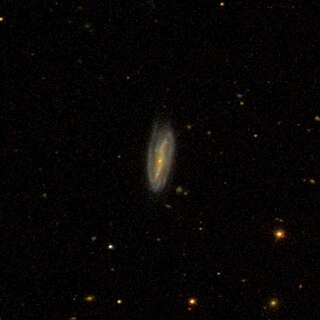
IC 3505 is a barred spiral galaxy located 640 million light-years away from the Solar System in the Coma Berenices constellation. With an apparent size of 0.95 by 0.35 arcmin, IC 3505 has an estimated diameter of 170,000 light-years, making it slightly larger compared to the Milky Way. It is categorized as a LINER galaxy with an active galactic nucleus emitting weak emission-lines.
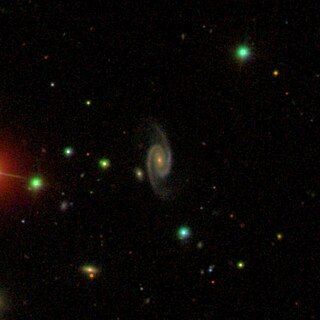
IC 3053 is a type Sab barred spiral galaxy with a ring located in the Coma Berenices constellation. The galaxy lies 720 million light-years from the Solar System and has an estimated diameter of 180,000 light-years meaning the galaxy is much larger compared to the Milky Way. IC 3053 was first discovered by Royal Harwood Frost on May 7, 1904. Despite listed in the Virgo Cluster Catalogue as VCC 95, it is not a member of the Virgo Cluster due to its high redshift and instead a background galaxy.
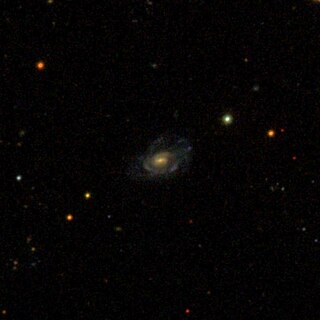
IC 3038 is a type Sab spiral galaxy located in the Virgo constellation. It is located 940 million light-years from the Solar System. The galaxy has an approximate diameter of 220,000 light-years, thus making it larger compared to the Milky Way. IC 3038 was found by Royal Harwood Frost on 7 May 1904. It has an apparent magnitude of 16p and located at right ascension of and declination. Although listed in the Virgo Cluster catalogue as VCC 57, it is not part of the Virgo Cluster, but instead a background galaxy.
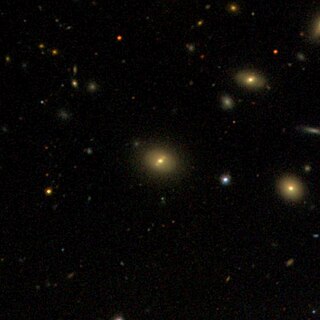
IC 4026 is a type S0 lenticular galaxy with a bar located in Coma Berenices. It is located 315 million light-years away from the Solar System and has an approximate diameter of 70,000 light-years which is less the size of the Milky Way. IC 4026 was discovered on May 11, 1896, by astronomer Hermann Kobold and is a member of the Coma Cluster. It has a surface brightness of 11.99 mag/arcsecs meaning it is a high surface brightness galaxy.




















